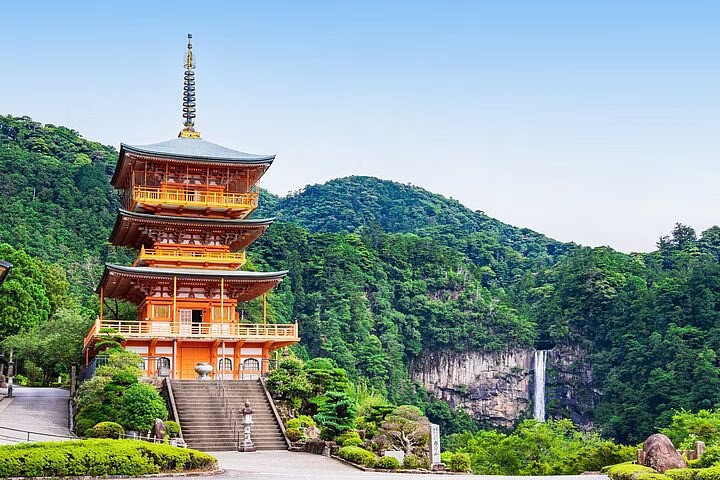
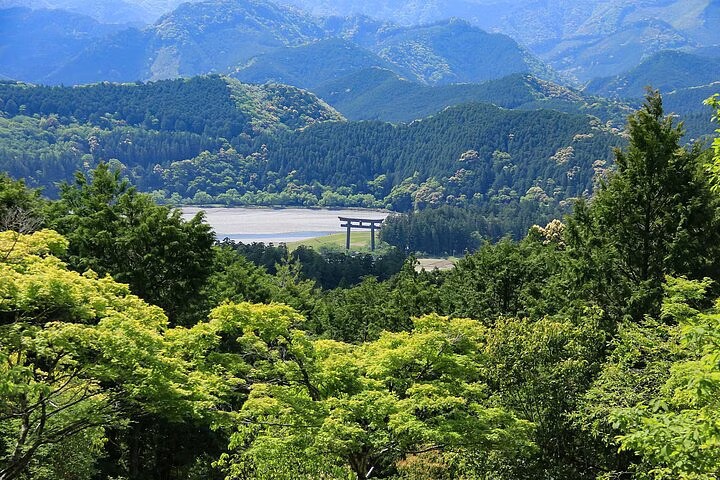
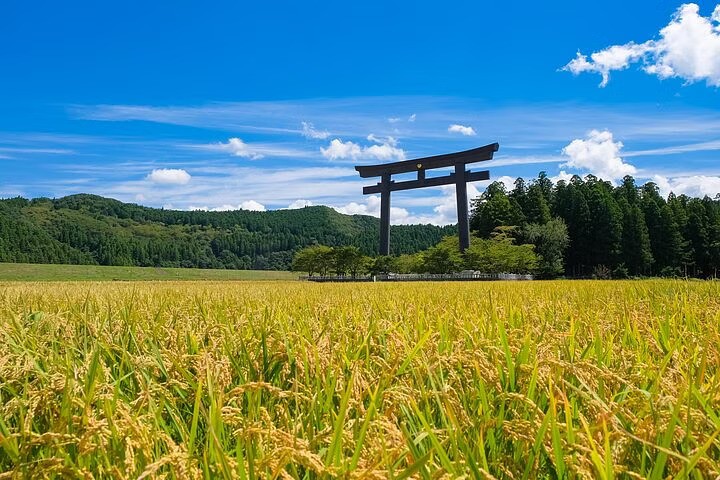
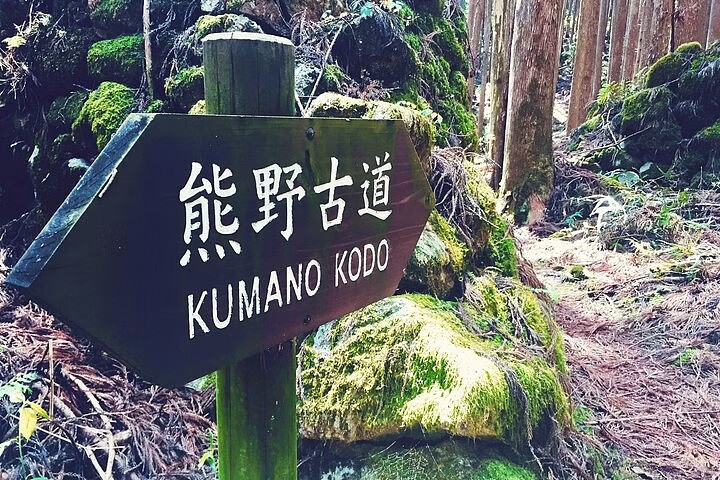
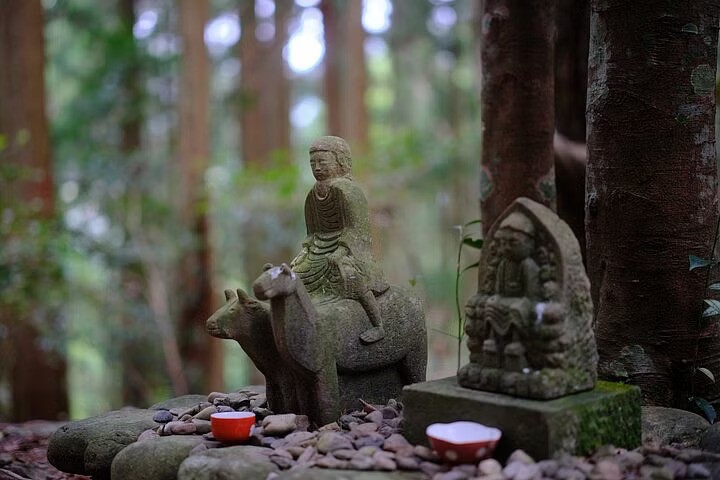
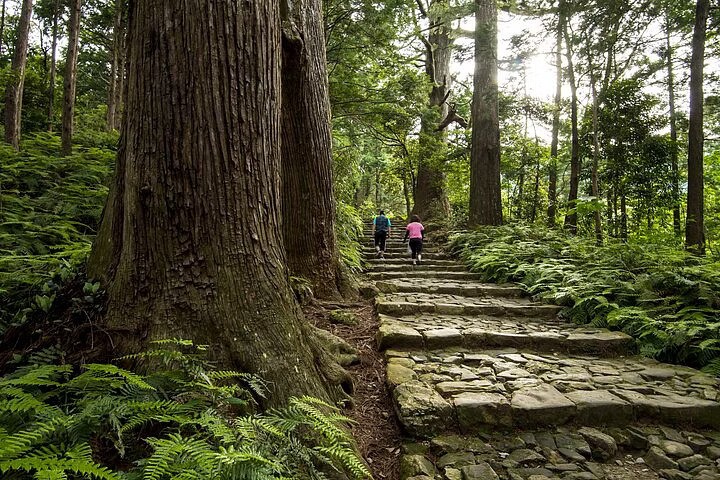






This is the ideal pick for time-tight travelers wanting to discover lots of Kumano Kodo Pilgrimage highlights in a day. An ancient network of pilgrim trails dating back more than 1000 years connecting historic shrines and temples running through the river and deep mountains. All set to the backdrop of Kii Peninsula. The Kumano area has been considered a sacred site since prehistoric times. There are three major shrines in Kumano. Together, they are known as the Kumano Sanzan; each enshrines one of the area’s mountains, and under the influence of Buddhism came to be worshipped as the three deities of Kumano. Your guide and driver will fully support your Kumano Kodo Pilgrimage tour. We assure you will spend plenty of time with sacred breathtaking views.
Highlights

Enjoy Kumano Kodo Pilgrimage in 8 hours!

Choose 3-4 sites from the list to customize your itinerary!

Guided by english speaking guide!

Duration
8 hours

Offered in
English
What is included

Licensed Local English Speaking Guide

Private vehicle

Customizable Walking Tour of your choice of 3-4 sites from the list
What is not included

Entrance fees, Lunch, and Other personal expenses

You cannot combine multiple tour groups.

Guide Entry fees are only covered for sights listed under What to Expect.
Enjoy a captivating pilgrimage experience in just 8 hours! Select 3 to 4 sites that resonate with you to create your ideal itinerary. Whether you're drawn to peaceful forest trails, ancient shrines, or scenic viewpoints, you can design a journey that blends history, nature, and spirituality. Tailor your route to match your interests and pace, ensuring a fulfilling and memorable day. Your personalized adventure awaits!
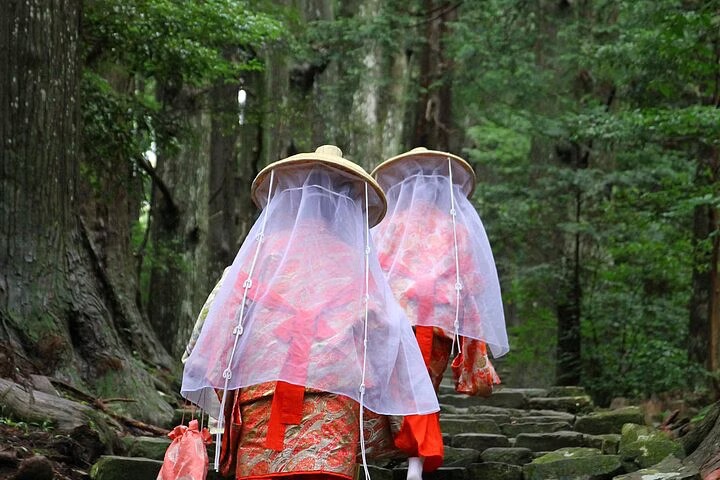
You can choose 3-4 sites ffrom the list below!
Kumano Kodo
Kumano Kodo (熊野古道, Kumano Kodō) refers to a network of pilgrimage trails through the southern Kansai region. The Kodo ("old ways") are a key part of the region's UNESCO designation and have been in use for over 1000 years. They are the only pilgrimage routes besides the Camino de Santiago to be designated a world heritage site. The pilgrimage routes developed as a way for people to move between the sacred areas on the Kii Peninsula. At the center of this religious area are the three Kumano shrines: Hongu Taisha, Hayatama Taisha and Nachi Taisha, collectively known as Kumano Sanzan. By the 12th century, the Kumano Sanzan were well known shrines in Japan, drawing pilgrims from Kyoto, Osaka and beyond. More than just a means to reach the three shrines, the pilgrimage trails were designed to be a religious experience in themselves and often pass through difficult, even dangerous, mountain terrain.
Kumano Hongu Taish
Kumano Hongu Taisha (熊野本宮大社, Kumano Hongū Taisha) is one of the Kumano region's three famous shrines. As well as enshrining its own deity, Hongu Taisha also enshrines the deities of the other two Kumano shrines, Hayatama Taisha and Nachi Taisha, and the sun goddess Amaterasu. It serves as the head shrine of over 3000 Kumano shrines across Japan. Reference to Hongu Taisha was first documented in the 9th century, which the establishment of the shrine must have preceded substantially. Due to floods in 1889, the shrine was moved from its original location at Oyu no Hara to its present site one kilometer away. In front of Oyu no Hara stands the biggest torii gate in the world, which, at 33 meters tall, dwarfs visitors passing under it.
Original site of Kumano Hongu Taisha Grand Shrine
This was the original site of Kumano Hongu Taisha Grand Shrine, until a flood in 1889. Now, only two small stone shrines remain, guarded by the world's largest torii gate.
Kumano Hayatama Taisha
Kumano Hayatama Taisha (熊野速玉大社) is one of Kumano's three important shrines. It is located in Shingu City on the southeast coast of the Kii Peninsula. Together with the other two shrines, Hongu Taisha and Nachi Taisha, Hayatama Taisha holds an important place in Japanese mythology. While the buildings were rebuilt recently, Hayatama Taisha has occupied the same spot on the Kumano Riverbank since at least the 12th century. In addition, religious artifacts that date back to the 3rd century are evidence that the area has been a site of worship for much longer. In fact, a Shinto creation myth claims that three kami (Shinto deities) descended to earth on a rock not far from the shrine.
Kumano Nachi Taisha
Kumano Nachi Taisha (熊野那智大社) is one of the three Kumano shrines, situated a few kilometers inland from the coastal hot spring resort of Katsuura. The shrine is part of a large complex of neighboring religious sites that exemplify the fusion of Buddhist and Shinto influences that is particular to the Kumano region. The site also boasts the tallest waterfall in Japan. The veneration of the Kumano shrines as holy sites of Shintoism predates Buddhism's introduction to Japan in the mid 6th century. Once Buddhism arrived in Kumano it took root quickly, and rather than competing with the indigenous religion for religious authority, it began a long process of harmonious mixing.
Nachi Falls
The Nachi Falls is the tallest waterfall in Japan as single uninterrupted drop of 133 meters, with a depth of 10 meters and one ton of water dropping down the cliff every second. The falls is counted as one of the Three Major Waterfalls in Japan and designated as the place of scenic beauty of Japan. The falls also forms a part of the "Sacred Site and Pilgrimage Routes in the Kii Mountain Range" UNESCO World Heritage Site.

JGA